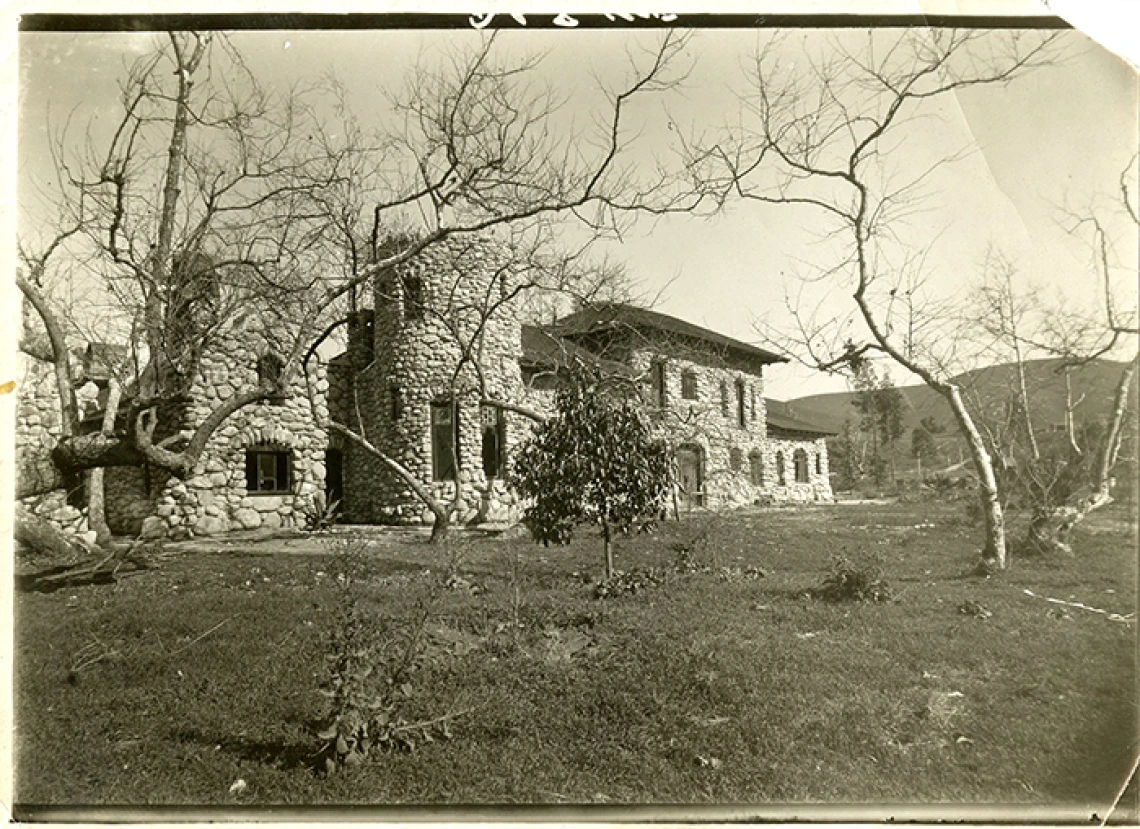Charles F. Lummis papers

Stone house, "El Alisal".
Collection dates: 1559-1973
The Correspondence, 1879-1928, includes members of the Lummis family, admirers of his writing, literary colleagues like Hamlin Garland, and political friends that include President Theodore Roosevelt and Major General Leonard Wood.
The Biographical materials and memorabilia, 1884-1973, includes miscellaneous personal items, autobiographical notes including the incomplete typescript of his memoirs, "As I Remember," with different versions and rewrites by his daughter, Turbese. Also includes extracts from Lummis' journal, clippings and a scrapbook.
The Photographs, 1889-1928, including over 300 photographs, many of which are cyanotypes. They depict Lummis throughout his life; his family; his home "El Alisal" being built in 1904; various places he visited; and friends, such as the historian Sharlot Hall, the naturalist John Burroughs, and the artist William Keith. Photographs of the Pueblo Indians date from 1889 to 1896; Acoma and Isleta Pueblos are the most represented. A smaller group of photographs from 1902 depicts Mohave Indians in Needles, California.
Historical materials, 1559-1932, including original and typescript historical documents mainly from Spain and California. The original Spanish ones are a 1559 manuscript concerning the reform of the royal hospital near Burgos, Spain; a 1584 manuscript relating the legal history of this hospital from the 1450's to the 1580's; and a 1613 "purity of blood" testimonial attesting to the non-Jewish background of Estaban Ruiz of Santa Marta, Spain. Among the original California documents are a 1796 manuscript, in Spanish, relating to the Santa Cruz Mission; an 1849 list of ship passengers on board the "Orpheus," from New York to San Francisco; and an 1883 narration, in Spanish, on the century's events in California: including the arrival of the Americans, Santa Ana, and the first printing enterprise.
Charles Fletcher Lummis was born in Lynn, Massachusetts on March 1, 1859, and died in Los Angeles on November 25, 1928. He was educated at home, and later attended Harvard University until 1881. He soon moved to Chillicothe, Ohio, where he briefly managed his father-in-law's farm before taking a job as reporter, and later as editor, with the local newspaper
He introduced himself to the West on foot during his famous 143 day walk from Cincinnati to Los Angeles. He began work there as editor of Harrison G. Otis' newspaper,
From 1885 on, Los Angeles was his base from which he explored, defended, and promoted the Southwest. His energy and enthusiasm were as broad as the land he loved. He investigated the Apache Wars in Arizona in 1886, recovered from a stroke and shooting in New Mexico, traveled with Adolph Bandelier to Peru, edited one of the most progressive periodicals of the region
A prolific promoter of the Southwest and California history, Lummis wrote many books on the area including
Lummis was married and divorced from Dorothea Rhodes (1880-1891), Eva Frances Douglas (1891-1910), and Gertrude Redit (1915-192?). His children were Bertha Belle Page, b. 1879, Dorothea Turbese, 1892-1968, Amado Bandelier, 1894-1900, Jordan (Quimu), b. 1900, and Keith, 1904-1991.
A collection guide explains what's in a collection. New to using our collections? Learn how to use a collection guide.
Collection guideAccess this collection
Visit us in person to access materials from this collection. Our materials are one-of-a-kind and require special care, so they can’t be checked out or taken home.
How to cite
Learn how to cite and use materials from Special Collections in your research.
